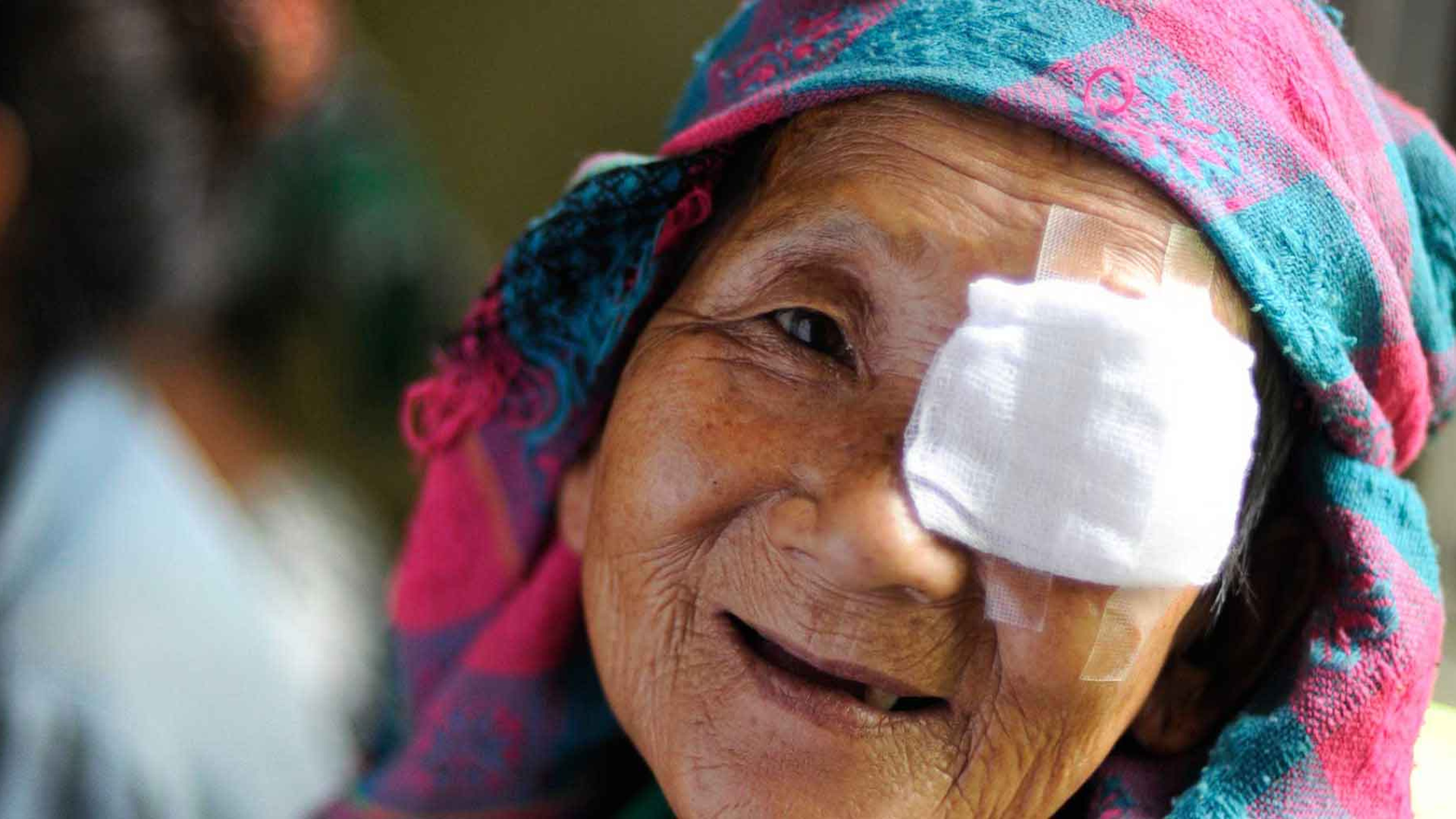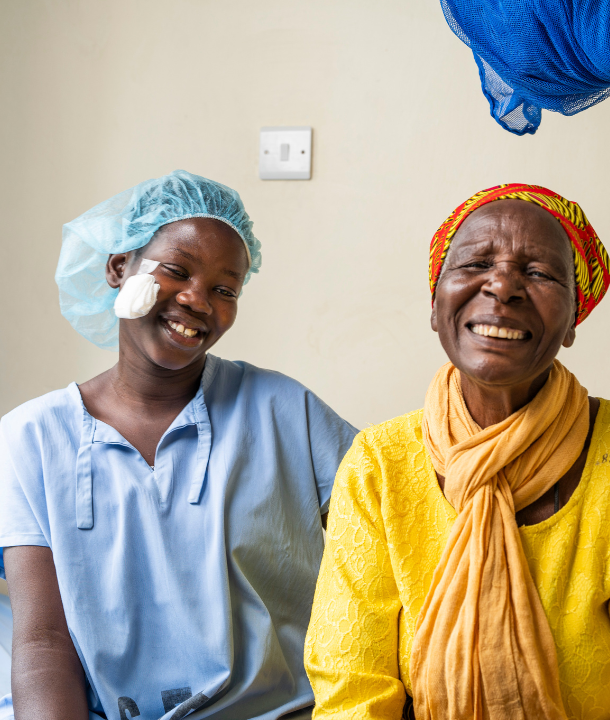
What is cataract?
Cataract is the leading cause of blindness worldwide. When someone suffers from cataract, a clouding in the normally clear lens, it causes vision to become proportionately reduced. Cataract can affect either or both eyes.
Early stages of cataract may cause no decrease in the acuity of vision and the eye can look normal to an untrained person. However, there can be other symptoms like glare sensitivity, blurry vision, faded colours and reading difficulties.
The normally clear (black) pupillary area becomes grey, as a milky cloudiness of the lens progresses till the cataract is mature. Once a cataract is mature, it has a great impact a person’s independence, since only light and dark can be distinguished.
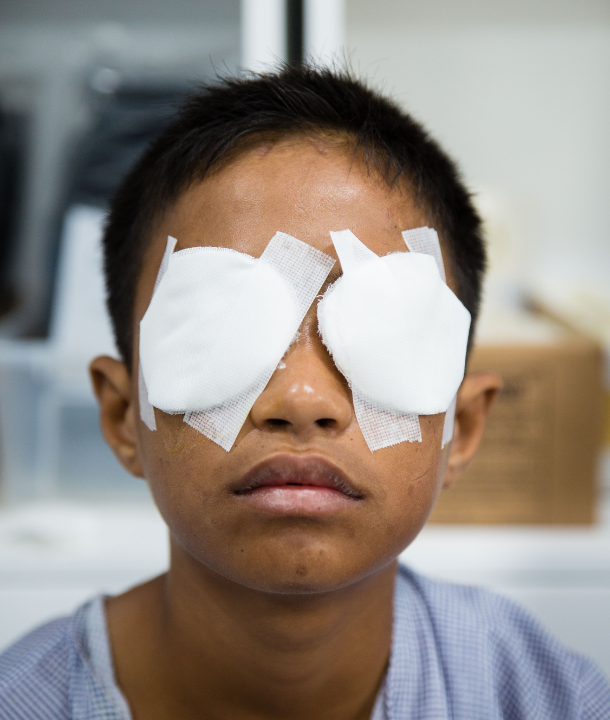
Who suffers from it?
While cataract is commonly associated with ageing, not everyone who suffers from it is old. Some children are born with cataract (congenital cataracts) and, in these cases, early detection and treatment is critical to prevent permanent damage.
As well as being hereditary, other causes of cataract can include eye trauma, sunlight exposure, diabetes, genetic disorders or dehydration in children from severe diarrhoeal infection and fevers, and even some medications.
Most people with severe vision loss due to cataract live in developing countries. This is particularly devastating because work, education and family life are affected, making it hard to escape the cycle of poverty. In some cases, people die prematurely. The impact of cataract is an inexcusable injustice because it’s a disease for which a safe, effective and relatively inexpensive treatment is available in more developed parts of the world.
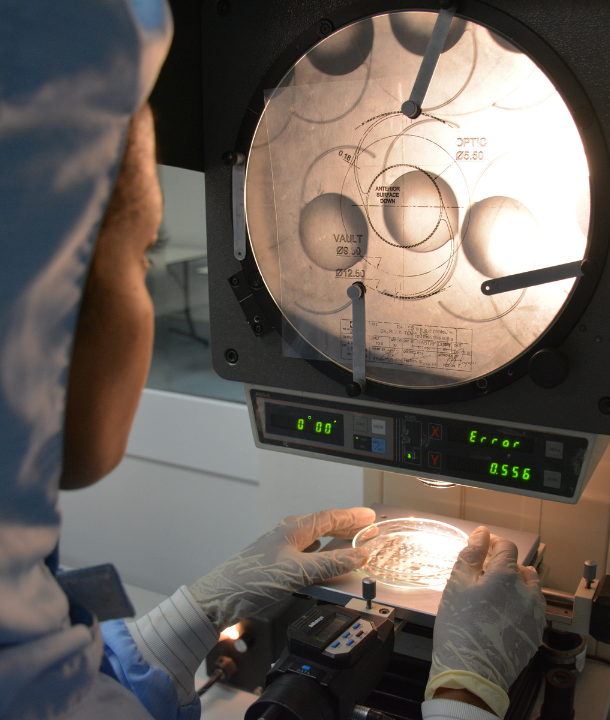
Treatment for cataract
Good quality eye services are crucial for diagnosing and treating people with cataract. While well-trained non-specialists can detect people in need of cataract surgery, often with a simple torchlight examination at their doorstep, the pre-operative assessment and the surgery itself requires infrastructure, equipment and technical skill.
Surgery is necessary when the cataract begins to interfere with daily activities. Ordinarily, a person doesn’t have to wait until the cataract is mature for sight to be restored. Post-operative and follow-up care can often be provided close to home, so The Foundation supports outreach services that enable more people to access available care.
Cataract is treated with a straightforward, 20 minute surgery, performed in most countries by an ophthalmologist. Surgery involves removing the cloudy lens tissue, and replacing the natural lens with an implant called an intraocular lens (IOL). The power of the implant is calculated individually for each eye, so the image for distance is brought to focus on the retina and the person is able to see clearly within a few hours after surgery. Medication and care is required for a few weeks till the eye is completely healed.
It was Fred’s dream to provide low cost IOLs to the world. Part of The Foundation’s early work was to set up IOL factories in Eritrea and Nepal to lower the cost of cataract surgery in developing countries such as these. Since they’ve opened, the factories have produced over 4 million lenses. The low cost of production of the lenses means that in some countries, cataract surgery can cost as little as $25.
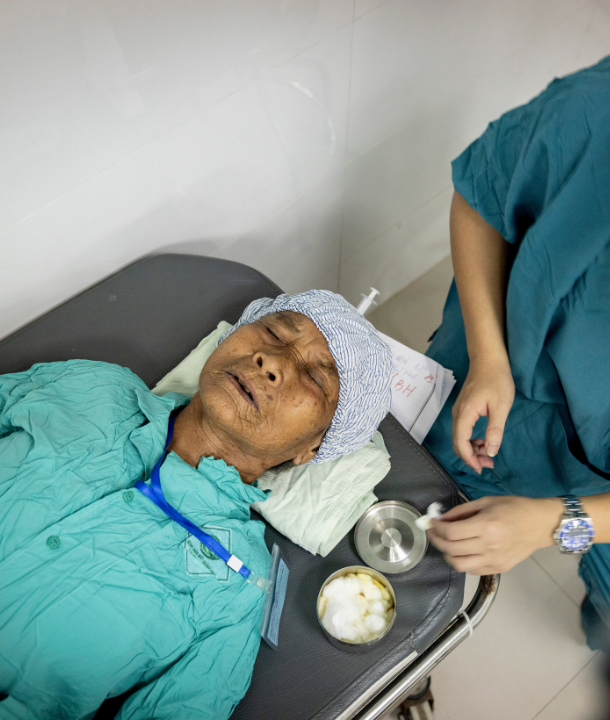
Can cataract be prevented?
Currently, there is no effective medical treatment which can prevent cataract or slow its progress. However, cataracts can be operated on before vision loss leads to blindness.
In developing countries, the key to the prevention of blindness due to cataract is improving access to quality eye care services. This way, people can get the right advice on when surgery is needed, and what pre- and post-operative care is available.
The prevention of cataract still presents a significant public health challenge because of the number of people affected and the lack of services available in developing countries. However, we know the solution. We’ve restored sight to more than 3 million people since The Foundation started, and we have no plans to slow down.
Disclaimer: the content on this page is not intended to be medical advice. For medical advice, please contact your local health professional.

Read more about other eye diseases and conditions.
Read our Eye Health Glossary
